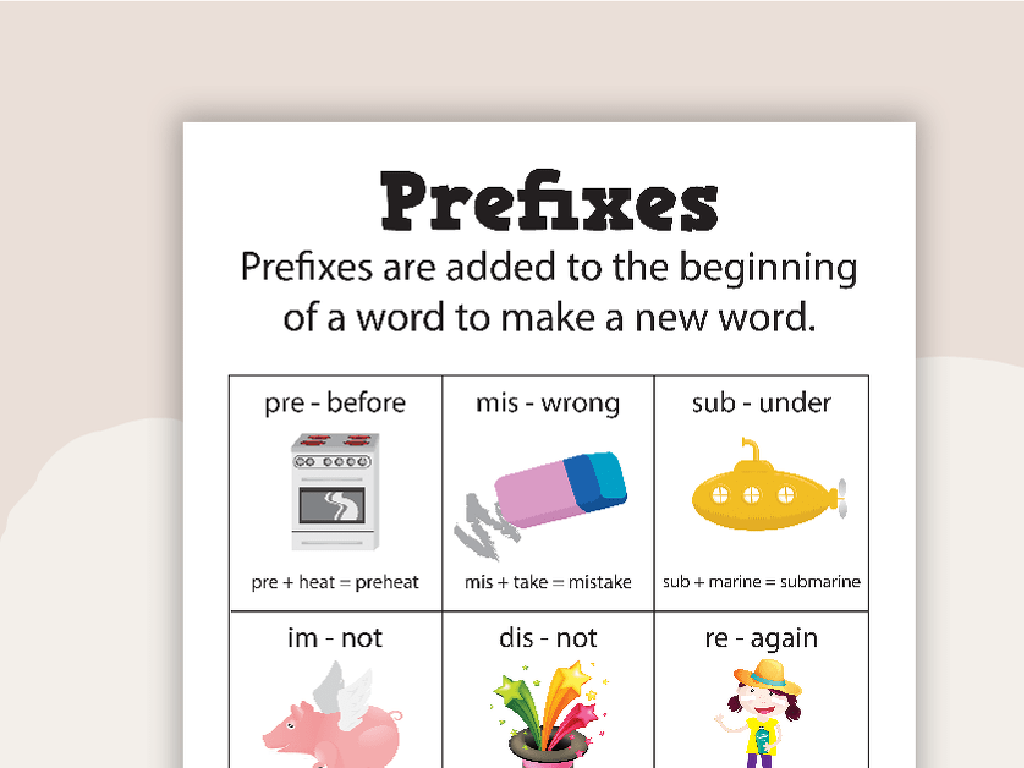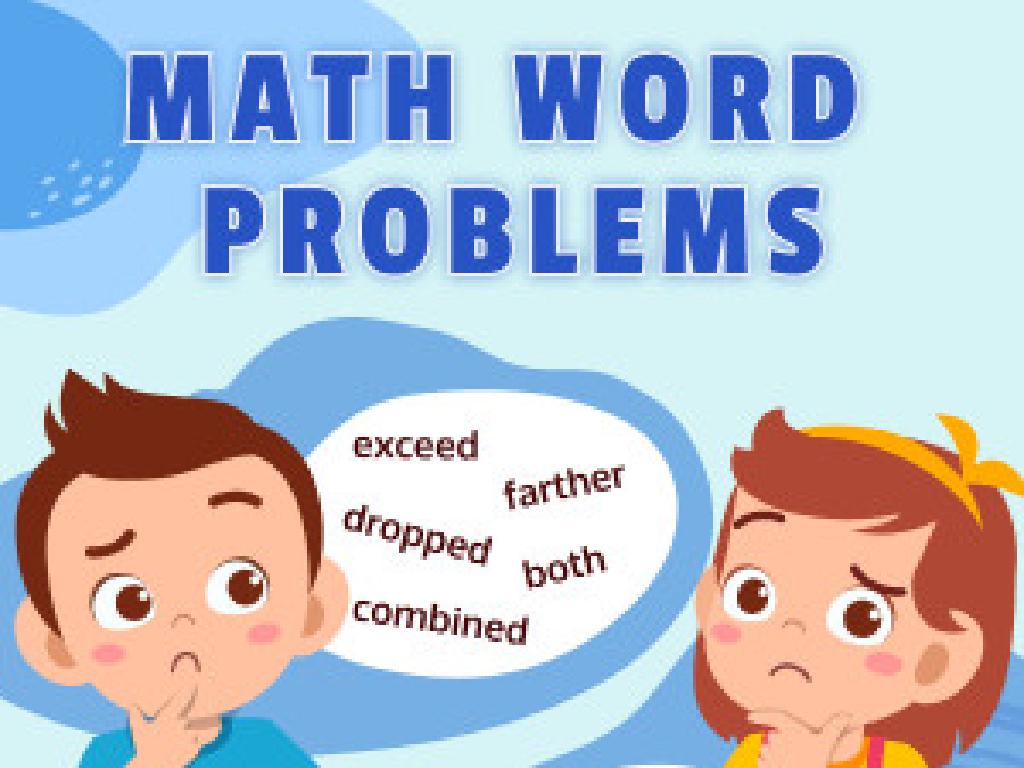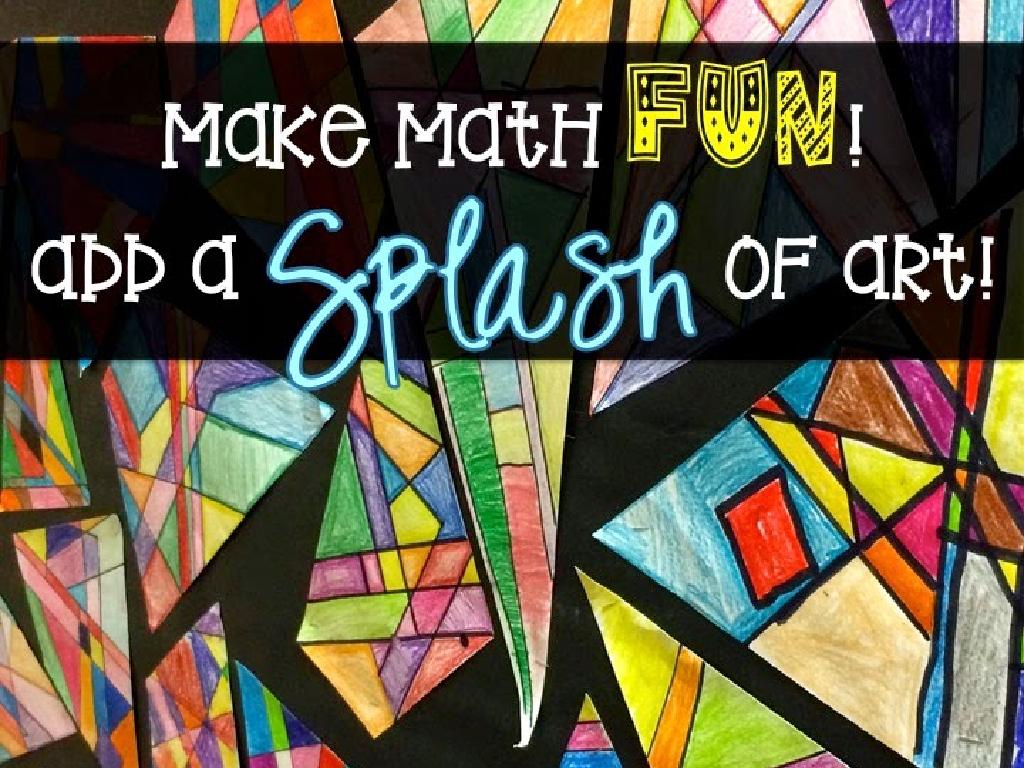Fewer And More - Compare In A Mixed Group Up To 5
Subject: Math
Grade: Kindergarten
Topic: Comparing Up To 5
Please LOG IN to download the presentation. Access is available to registered users only.
View More Content
Comparing Quantities: Fewer and More
– Learn to compare objects
– Count and compare items in groups
– ‘Fewer’ vs. ‘More’: what do they mean?
– ‘Fewer’ means not as many, ‘More’ means a greater number
– Fun games to understand comparison
– Games like ‘More or Less’ with toys or snacks
– Show what you’ve learned!
|
This slide introduces the concept of comparison to Kindergarten students by focusing on the terms ‘fewer’ and ‘more.’ Begin by explaining that comparing is when we look at two or more things to see what is different about them. Use real-life examples like comparing the number of apples to oranges in two bowls. Introduce the terms ‘fewer’ and ‘more’ with clear definitions. Engage the students with interactive games where they can physically group and count items to determine which has more or fewer objects. Encourage participation and ensure that each student has a chance to demonstrate their understanding by the end of the lesson.
Understanding ‘Fewer’ in Groups
– ‘Fewer’ means a smaller number
– Comparing groups of apples
– Look at two groups and see which has less
– Spot the group with fewer apples
– Use real apples to visualize and compare
– Practice with different items
– Try comparing with toys, pencils, etc.
|
This slide introduces the concept of ‘fewer’ to Kindergarten students by comparing groups of items. Start by explaining that ‘fewer’ means a smaller number of items in one group compared to another. Use visual aids like pictures of apples to illustrate this point. Encourage the students to observe and determine which group has fewer apples. Provide real apples for hands-on comparison to reinforce the concept. Extend the activity by using different items such as toys or pencils to ensure students can apply the concept of ‘fewer’ across various contexts. The goal is to make them comfortable with comparing quantities in a fun and interactive way.
Understanding ‘More’ in Numbers
– ‘More’ means a larger amount
– Comparing groups of balloons
– Look at two groups and count each
– Identifying the group with more
– The group with the higher number wins
– Practice with real objects
– Use toys or snacks to learn
|
This slide introduces the concept of ‘more’ to Kindergarten students by comparing quantities. Start by explaining that ‘more’ refers to a larger number or amount of something. Use visual aids like pictures of balloons to illustrate this concept. Have two groups of balloons and ask the students to count the number in each group. The group with the higher count has ‘more’ balloons. Encourage students to practice this concept using tangible items like toys or snacks to reinforce learning. This hands-on activity will help them grasp the idea of comparing quantities and understanding ‘more’.
Comparing Groups: More or Fewer?
– We can compare different things
– Count items in each group
– Use objects like blocks or toys to count
– Find which group has more
– The group with the higher count has more
– Find which group has fewer
– The group with the lower count has fewer
|
This slide introduces the concept of comparing groups to determine which has more or fewer items. Encourage the children to think about different objects they can compare, such as toys, fruits, or even their own fingers. Use hands-on activities with tangible items to help them count and compare. For example, have one group of 3 apples and another group of 5 bananas, and ask the children to identify which group has more and which has fewer. This will help them understand the concept of quantity comparison in a fun and interactive way. Prepare several examples with different items and numbers up to 5 to ensure they grasp the concept.
Let’s Practice Together: More or Fewer Toys?
– Observe two groups of toys
– Decide which group has more
– Does one group have a bigger number of toys?
– Decide which group has fewer
– Does one group have a smaller number of toys?
– Share your answers with the class
|
This slide is for an interactive class activity designed to help Kindergarten students understand the concepts of ‘more’ and ‘fewer’ through a fun comparison game with toys. Display two groups of toys with different quantities, up to five, and ask the students to observe and compare the groups. Encourage them to count and use their fingers if necessary to determine which group has more toys and which has fewer. After they make their decisions, ask them to share their answers and explain how they reached their conclusions. This activity will help reinforce their counting skills and understanding of quantity comparison. Possible variations of the activity could include using different types of objects, using images of groups of items, or even having students group themselves to compare quantities.
Your Turn to Compare: Fewer or More?
– Observe the given pictures
– Count items in each picture
– Decide which has fewer items
– Fewer means not as many; look for the smaller group
– Decide which has more items
– More means a larger number; find the bigger group
|
This slide is an interactive activity for students to apply their understanding of comparing quantities. Present pictures with different groups of items, ensuring that each group has five or fewer items. Encourage the students to count the items in each picture carefully. Then, ask them to determine which picture has fewer items and which has more. This activity helps to reinforce the concept of comparison and quantity in a fun and engaging way. For the teacher: Prepare several sets of images with varying numbers of items up to five. Allow students to work individually or in pairs to foster discussion and collaborative learning. Consider using real objects for a hands-on experience if possible.
Class Activity: More or Fewer Game with Blocks
– Let’s play a game with blocks!
– Create two groups of blocks
– Make one group, then another. How many blocks in each?
– Compare the two groups
– Look at your groups, which one is bigger?
– Tell a friend which has more or fewer
– Share your findings with a classmate
|
This interactive game is designed to help Kindergarten students understand the concepts of ‘more’ and ‘fewer’ through hands-on experience. Provide each student with an assortment of blocks. Instruct them to form two separate groups and count the number of blocks in each. They should then compare the two groups to determine which has more blocks and which has fewer. Encourage them to use language like ‘This group has more because…’ or ‘This group has fewer because…’. Possible variations of the activity could include using different items, comparing groups made by other students, or even introducing the concept of ‘the same’ if both groups have an equal number of blocks. This activity will help solidify their understanding of comparison and quantity in a fun and engaging way.






